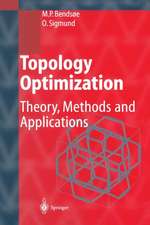Structural Analysis of Metallic Glasses with Computational Homology: SpringerBriefs in the Mathematics of Materials, cartea 2
Autor Akihiko Hirata, Kaname Matsue, Mingwei Chenen Limba Engleză Paperback – 14 apr 2016
Preț: 375.84 lei
Nou
Puncte Express: 564
Preț estimativ în valută:
71.92€ • 75.28$ • 59.86£
71.92€ • 75.28$ • 59.86£
Carte tipărită la comandă
Livrare economică 31 martie-14 aprilie
Preluare comenzi: 021 569.72.76
Specificații
ISBN-13: 9784431560548
ISBN-10: 4431560548
Pagini: 66
Ilustrații: XIV, 66 p. 33 illus., 7 illus. in color.
Dimensiuni: 155 x 235 x 4 mm
Greutate: 0.13 kg
Ediția:1st ed. 2016
Editura: Springer
Colecția Springer
Seria SpringerBriefs in the Mathematics of Materials
Locul publicării:Tokyo, Japan
ISBN-10: 4431560548
Pagini: 66
Ilustrații: XIV, 66 p. 33 illus., 7 illus. in color.
Dimensiuni: 155 x 235 x 4 mm
Greutate: 0.13 kg
Ediția:1st ed. 2016
Editura: Springer
Colecția Springer
Seria SpringerBriefs in the Mathematics of Materials
Locul publicării:Tokyo, Japan
Cuprins
1. Introduction.- 2. Metallic glasses.- 2.1. What is glass?.- 2-2. Structure and properties of metallic glasses.- 2-3. Structure determination and its difficulty.- 3. Homology and computational homology.- 3.1. Cubical complex.- 3.2. Cubical homology.- 3.3. Computing homology groups.- 4. Structure analysis of metallic glasses.- 4.1. Advantage of computational homology.- 4.2. Preparation of input data for metallic glasses.- 4.3. Computing procedure for metallic glasses.- 4.4. Interpretation of results obtained by computational homology.- 5. Appendix.
Recenzii
“This book presents a combination of physical and mathematical chapters aimed to provide an introduction to the methods. … the physical chapters give a clear introduction into the underlying structures and the motivation of the approach, while the mathematical chapters provide a formal description of mathematical methods … . this book not only reviews the obtained results but also shortly formulates open problems and emerging topics in the field of more accurate homological analysis of disordered media.” (Eugene Postnikov, zbMATH 1352.82001, 2017)
Textul de pe ultima copertă
This book introduces the application of computational homology for structural analysis of metallic glasses. Metallic glasses, relatively new materials in the field of metals, are the next-generation structural and functional materials owing to their excellent properties. To understand their properties and to develop novel metallic glass materials, it is necessary to uncover their atomic structures which have no periodicity, unlike crystals. Although many experimental and simulation studies have been performed to reveal the structures, it is extremely difficult to perceive a relationship between structures and properties without an appropriate point of view, or language. The purpose here is to show how a new approach using computational homology gives a useful insight into the interpretation of atomic structures. It is noted that computational homology has rapidly developed and is now widely applied for various data analyses. The book begins with a brief basic survey of metallic glassesand computational homology, then goes on to the detailed procedures and interpretation of computational homology analysis for metallic glasses. Understandable and readable information for both materials scientists and mathematicians is also provided.
Caracteristici
Describes for the first time the application of computational homology for atomic structures of glasses Introduces a successful example of the collaborative work between materials and mathematical researchers Provides readable and understandable mathematical information for non-specialist readers, especially materials scientists Includes supplementary material: sn.pub/extras


















